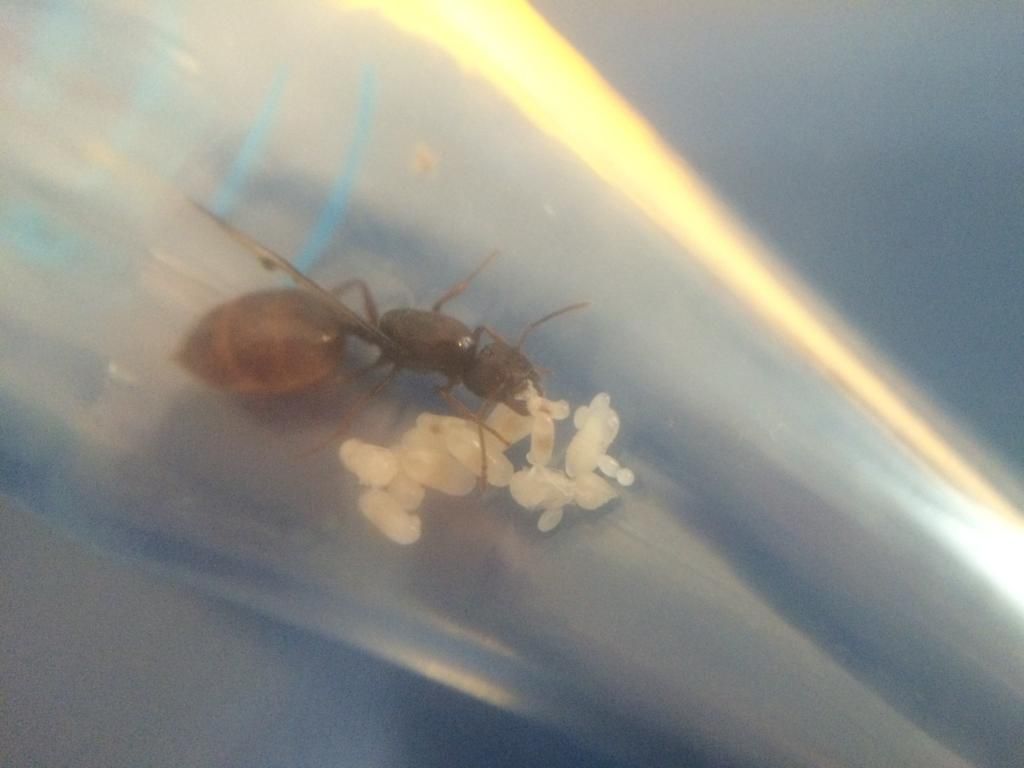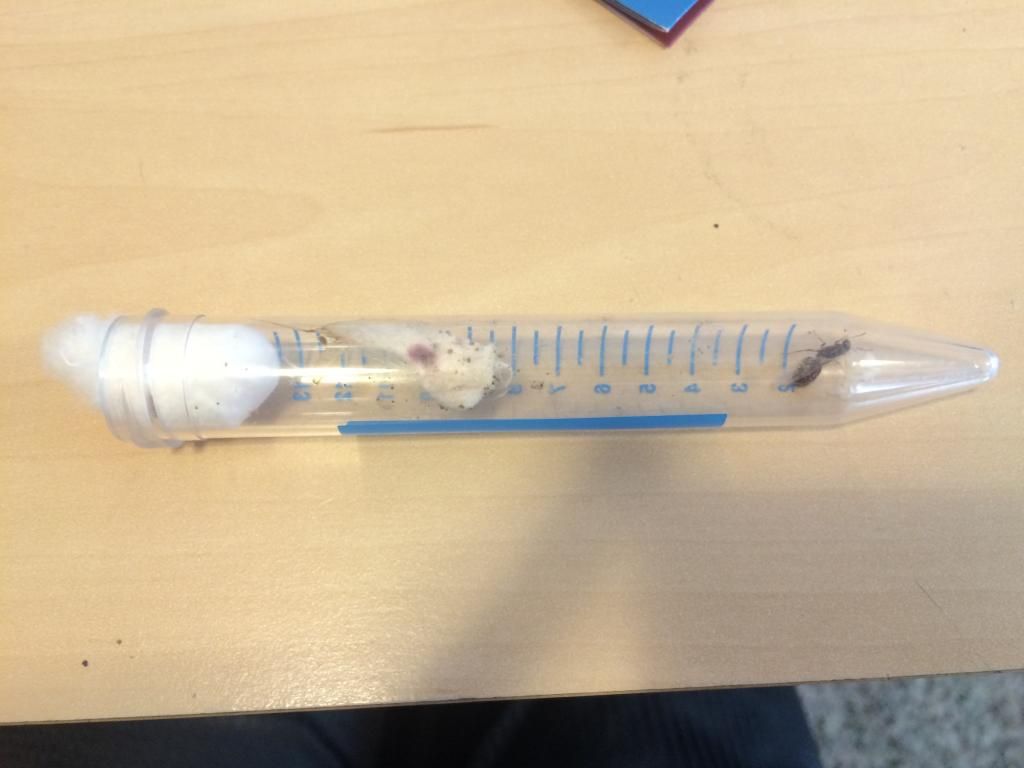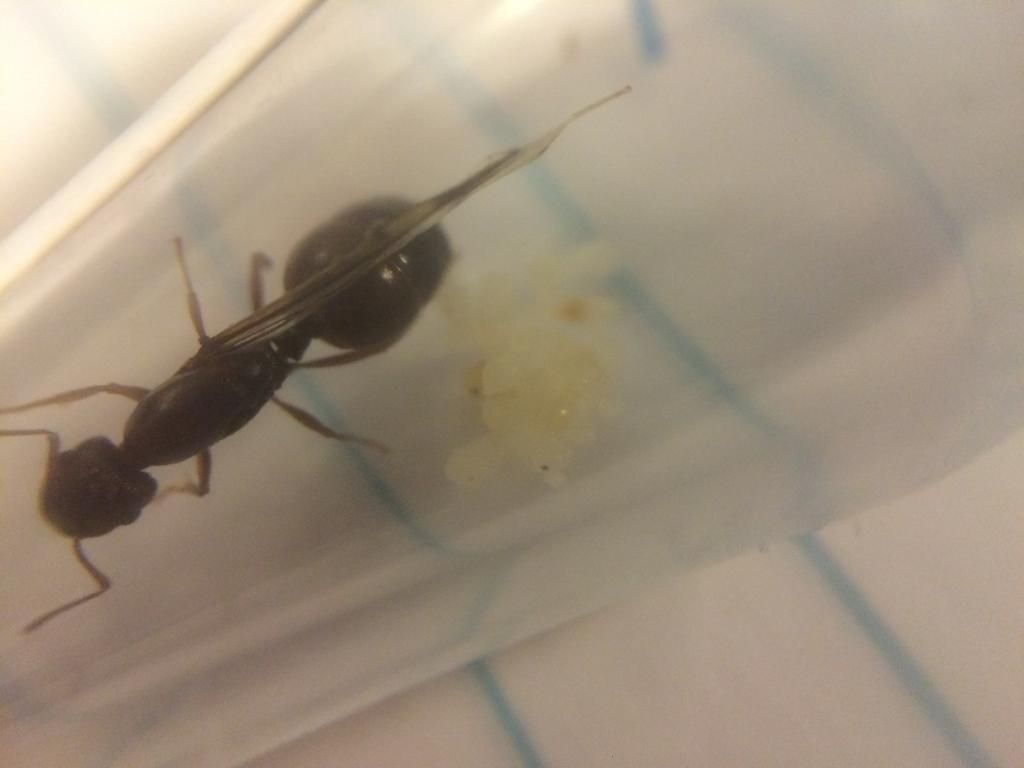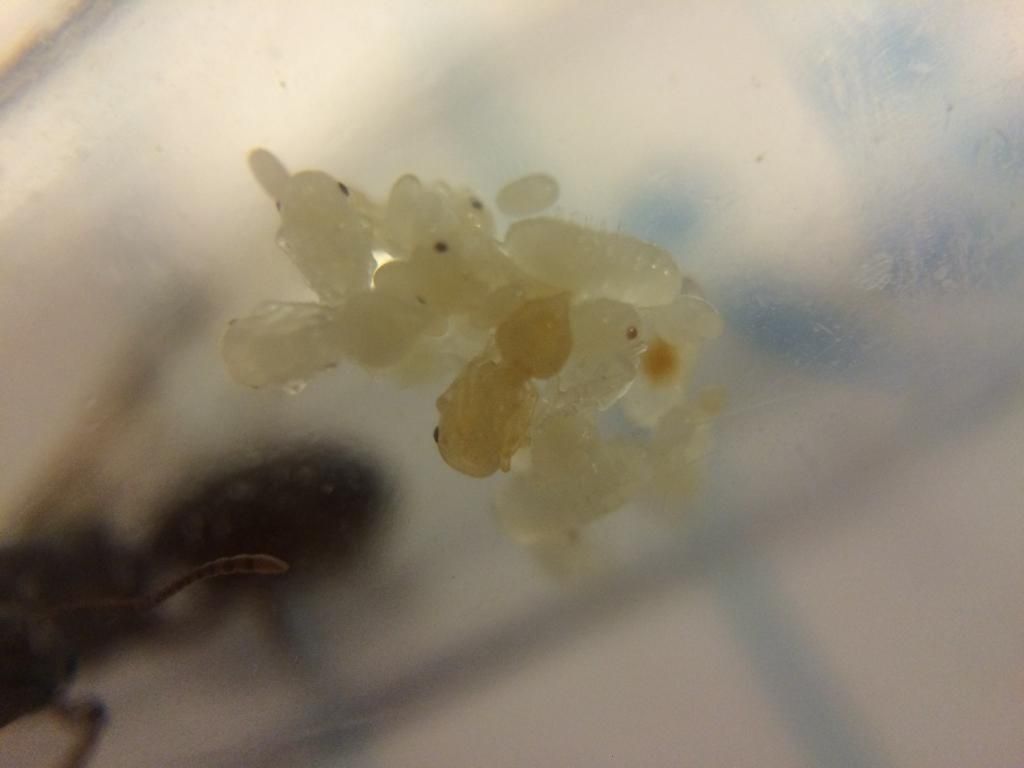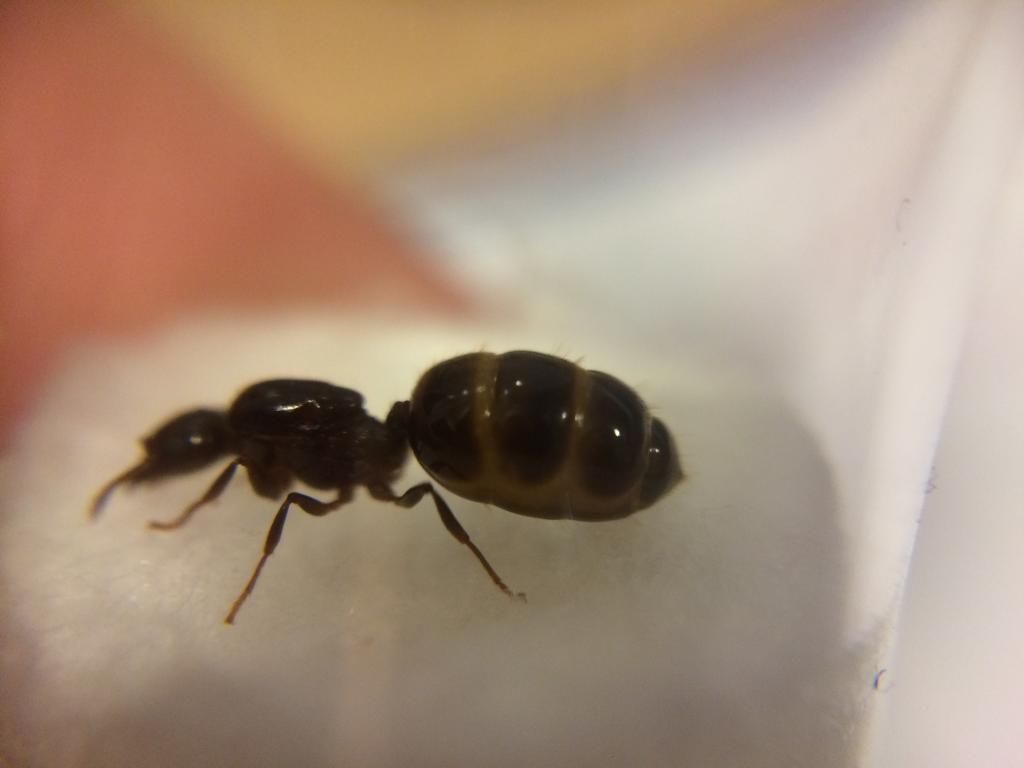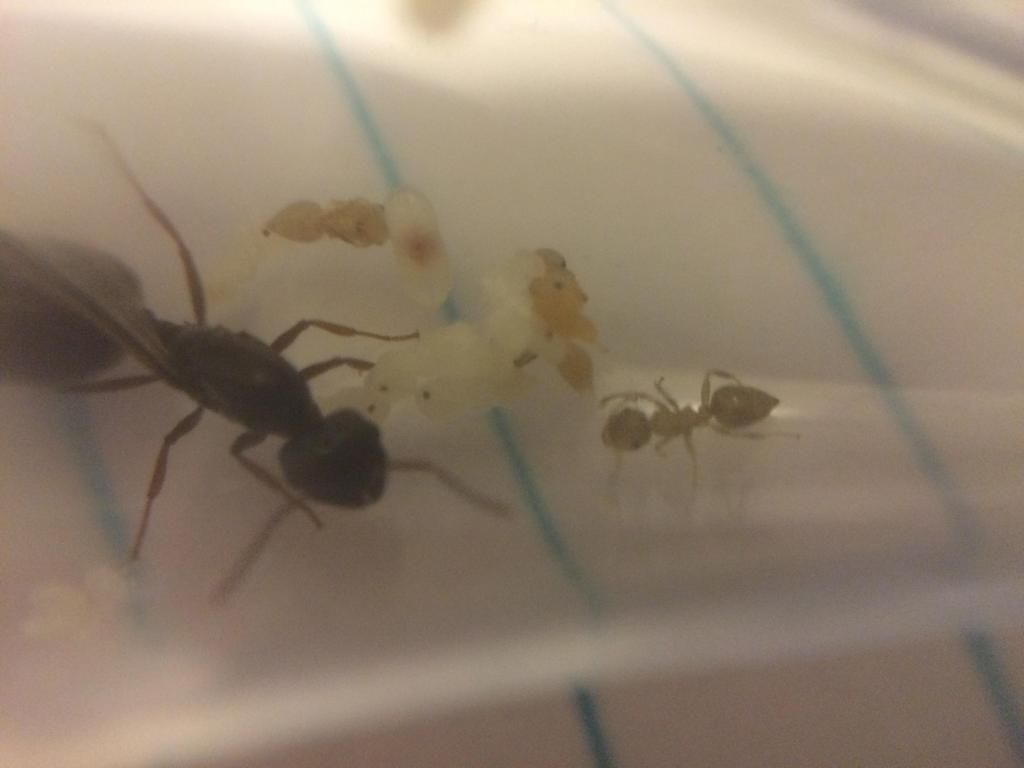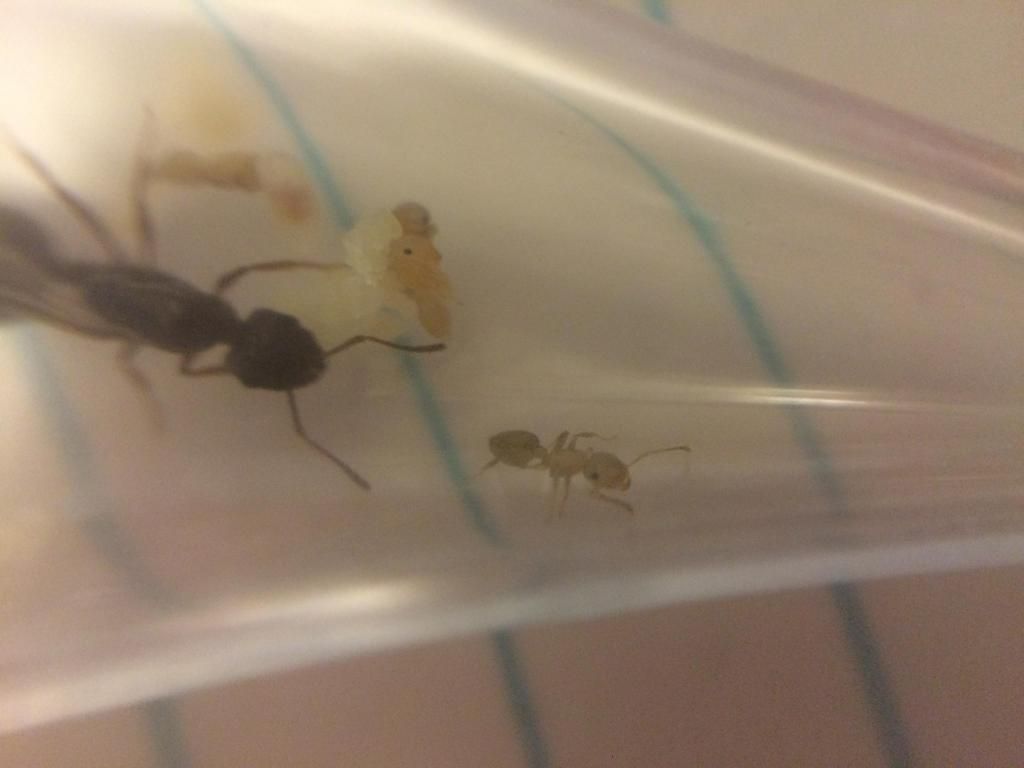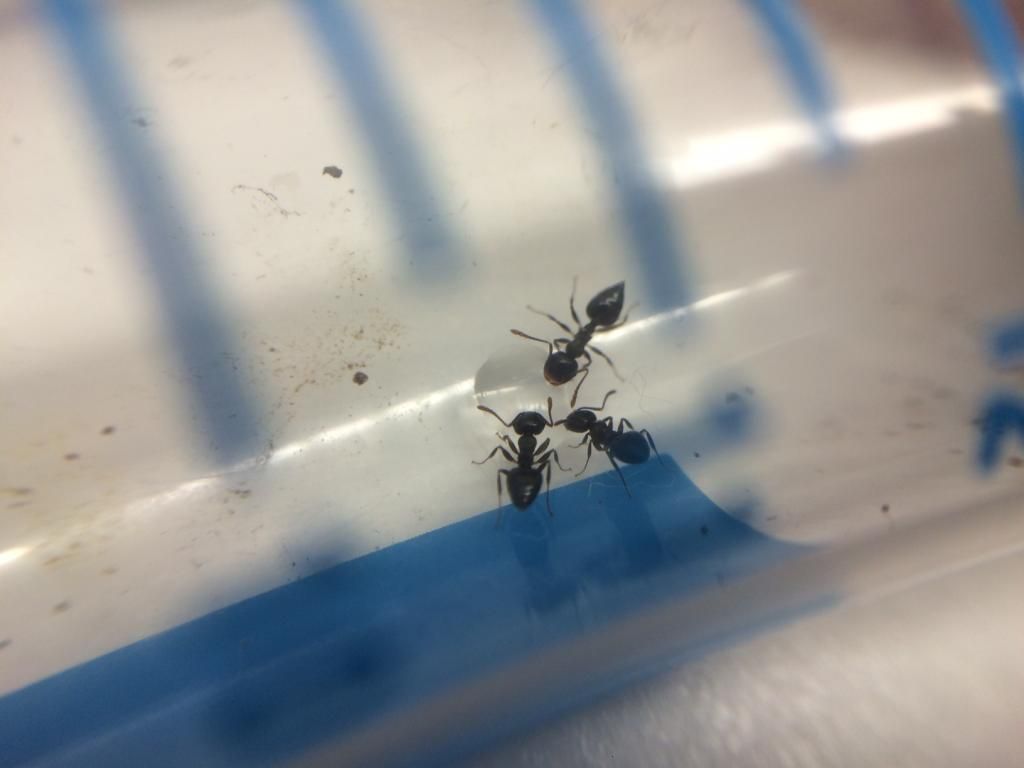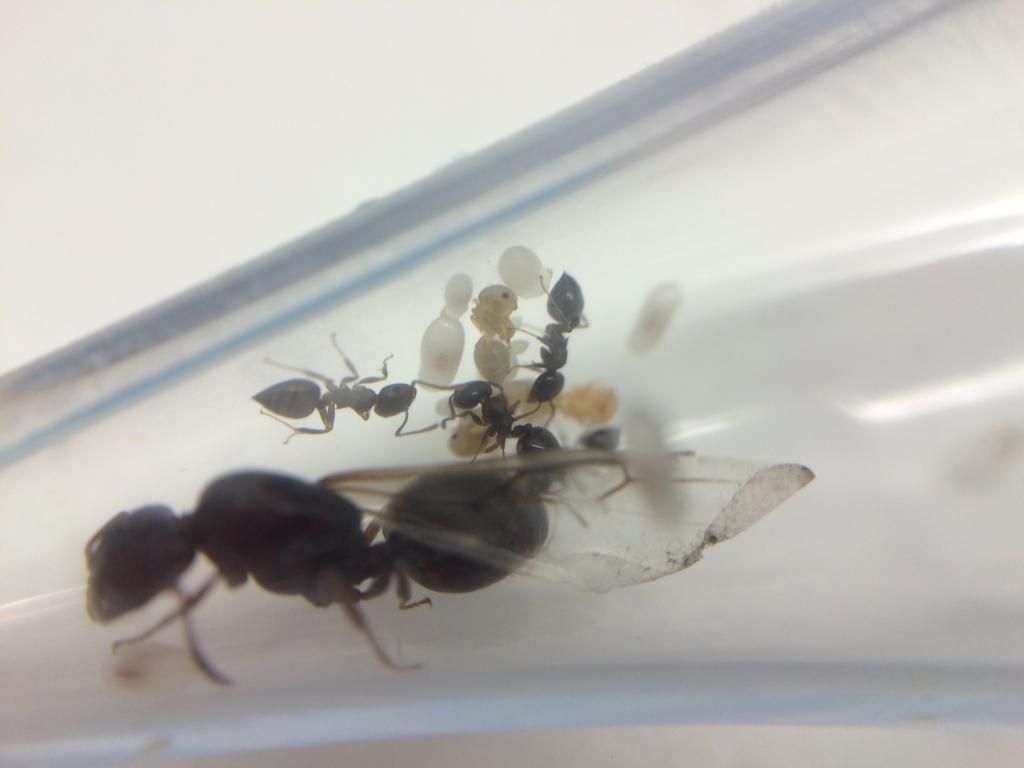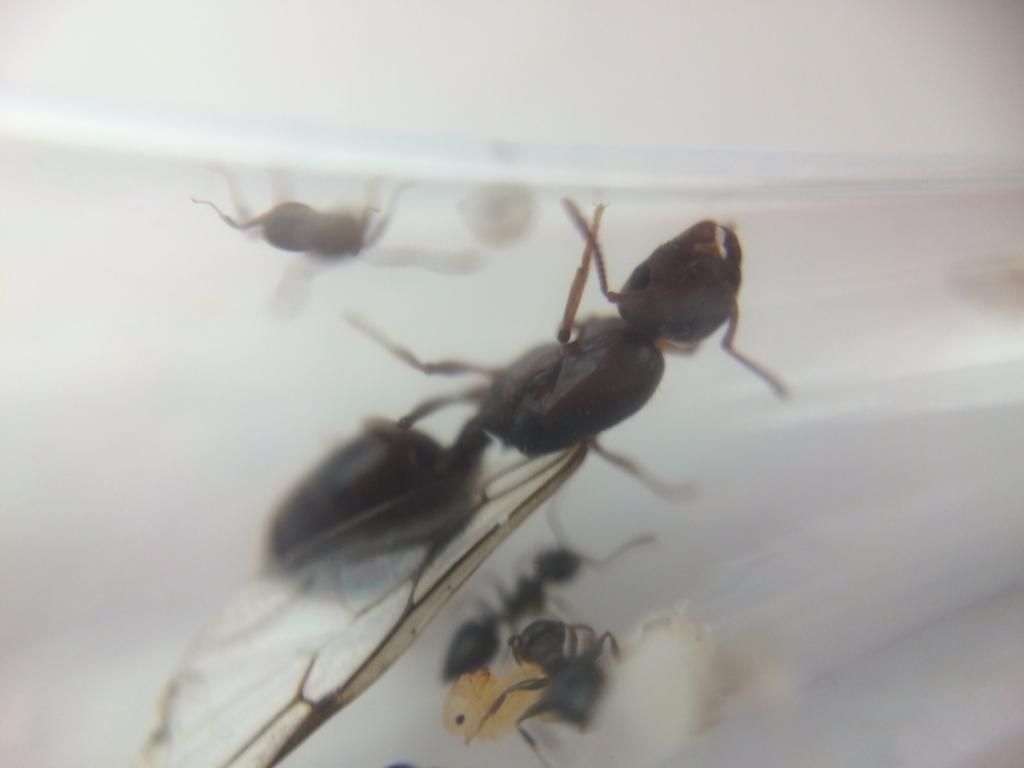Species: Crematogaster sp.1 & Crematogaster sp.2 (Both Unidentified)
January 11th, 2015
This journal will be about my two Crematogaster colonies. Both queens were collected in Arizona at the Ants of the Southwest Course (end of July, 2014). The larger queen, referred to as C. sp.1, was found winged in a hotel swimming pool the night before I arrived at the course. I placed her into a test tube with a moist cotton ball. She removed all but one of her wings a few days after. She laid 2 eggs while in Arizona, but ate them during transport. She produced a new batch a few weeks after returning. The eggs were very slow to develop into larvae, but since becoming larvae about a month ago, they have grown considerably and are now pupae, as you can see in the photos below. The darkening pupae will soon eclose, an activity that I very much hope to film. This queen has been fed a few drops of sugar water and a Drosophila fruit fly yesterday.
Here is her about two weeks ago:
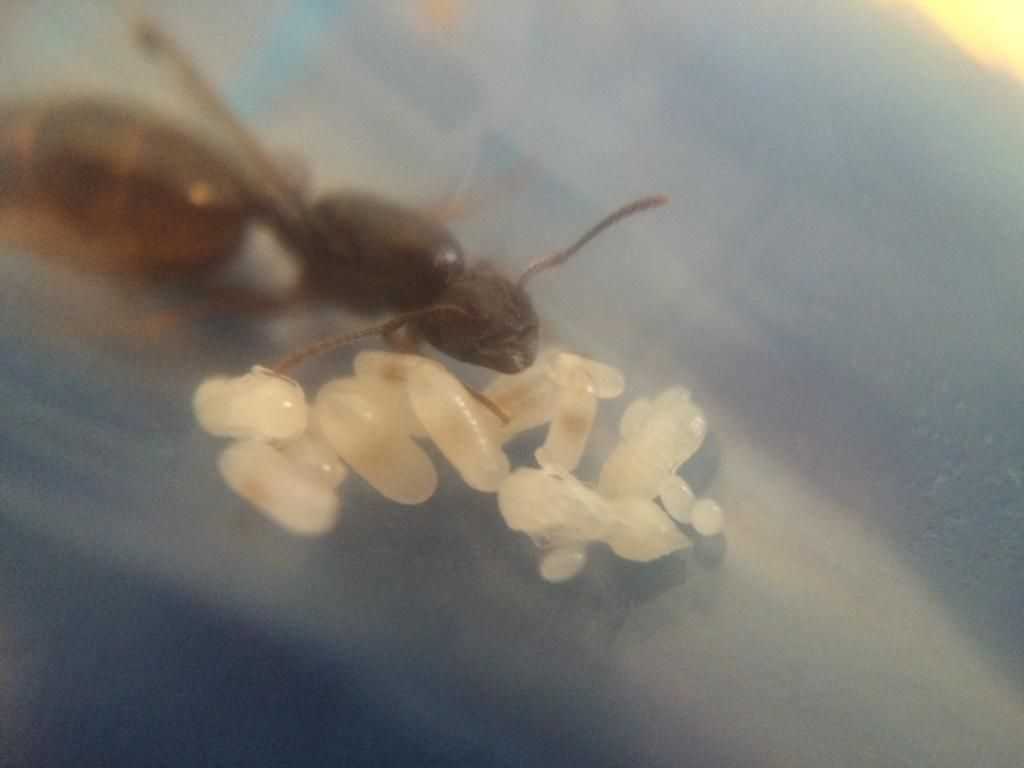
(The cotton has since been changed out - yes I know the setup is different than normal. I really hate using test tubes, and the ability to change out the cotton has been helpful. She is a desert species and has reacted well.)
Here she is as of yesterday:
The second queen, C. sp.2, was caught as a dealate. She has survived since then without eggs, only laying a half dozen or so in the past week after she was transferred to a new test tube (Not enough devolve chambers for her to have one). Her gaster has become quite distended with what I am hoping are more eggs.
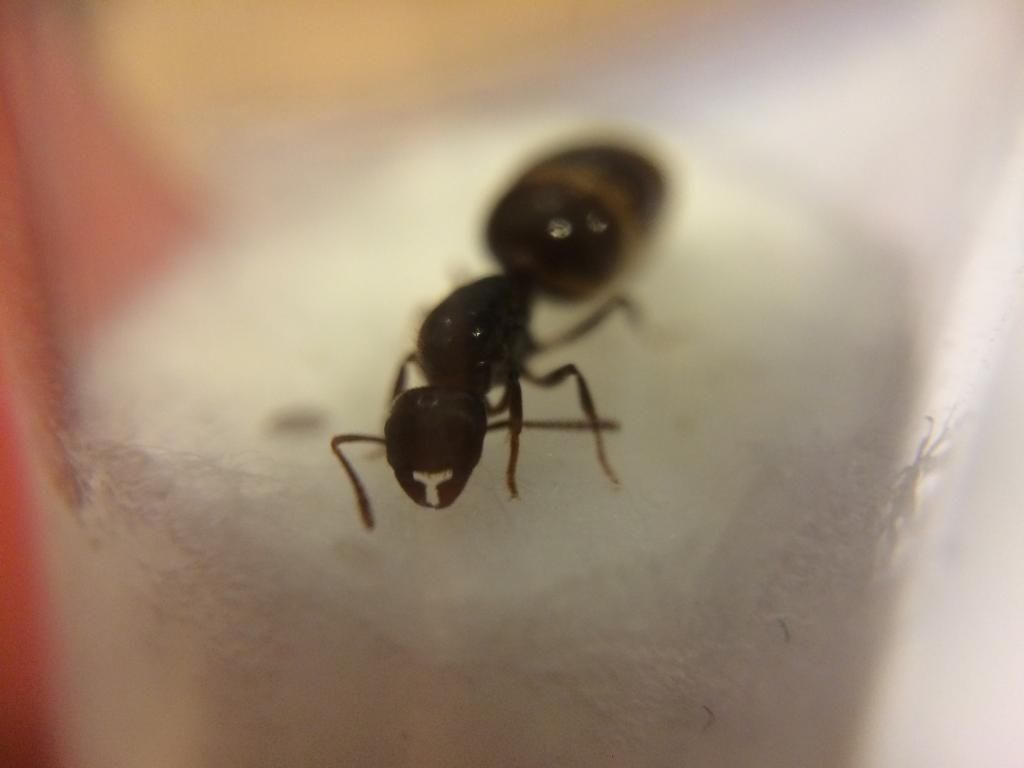
Edited by Miles, October 15 2015 - 5:26 PM.



